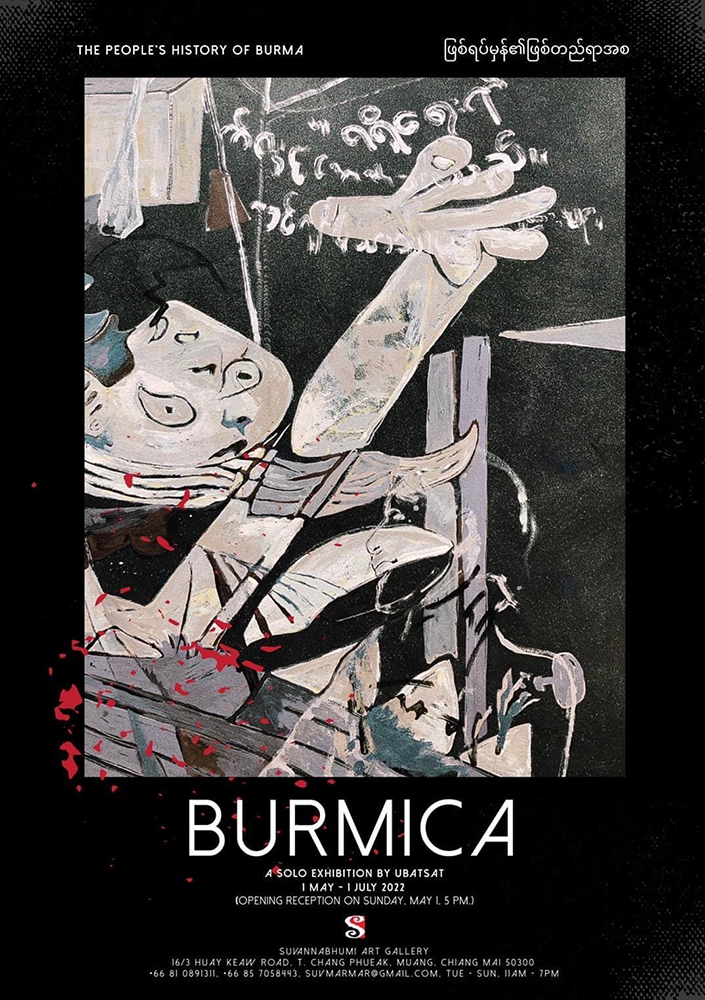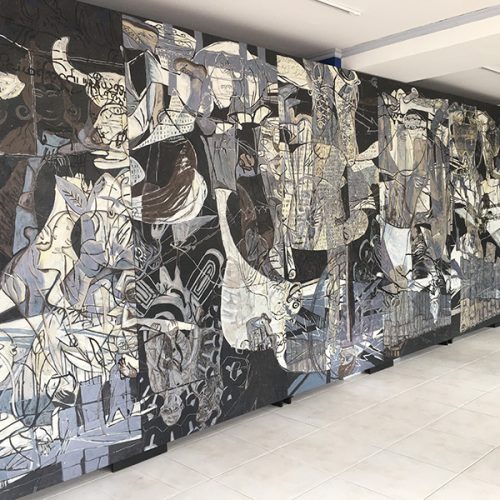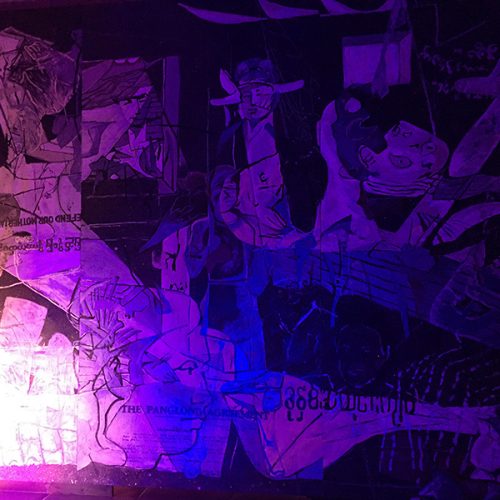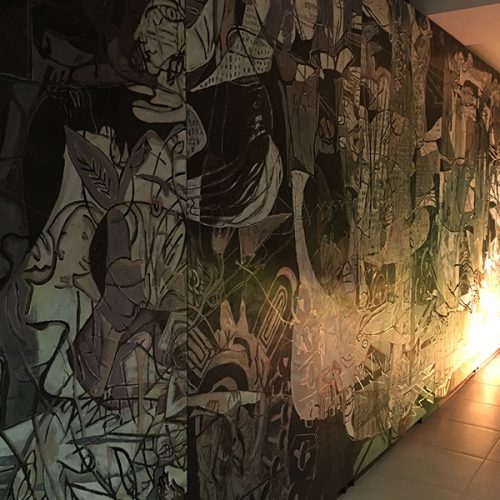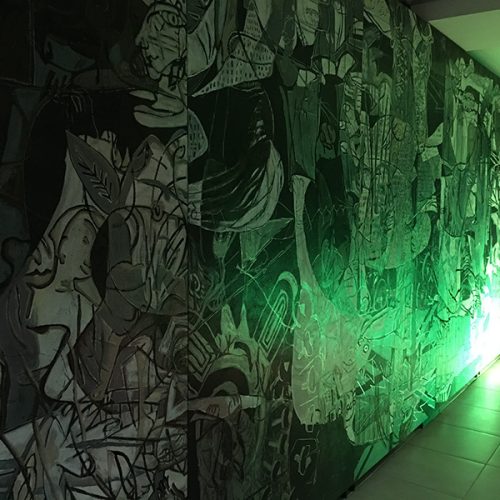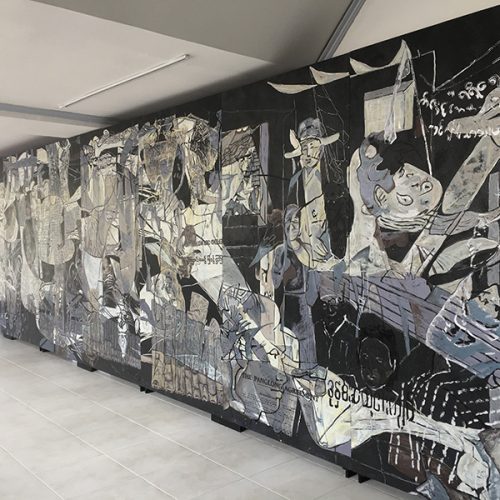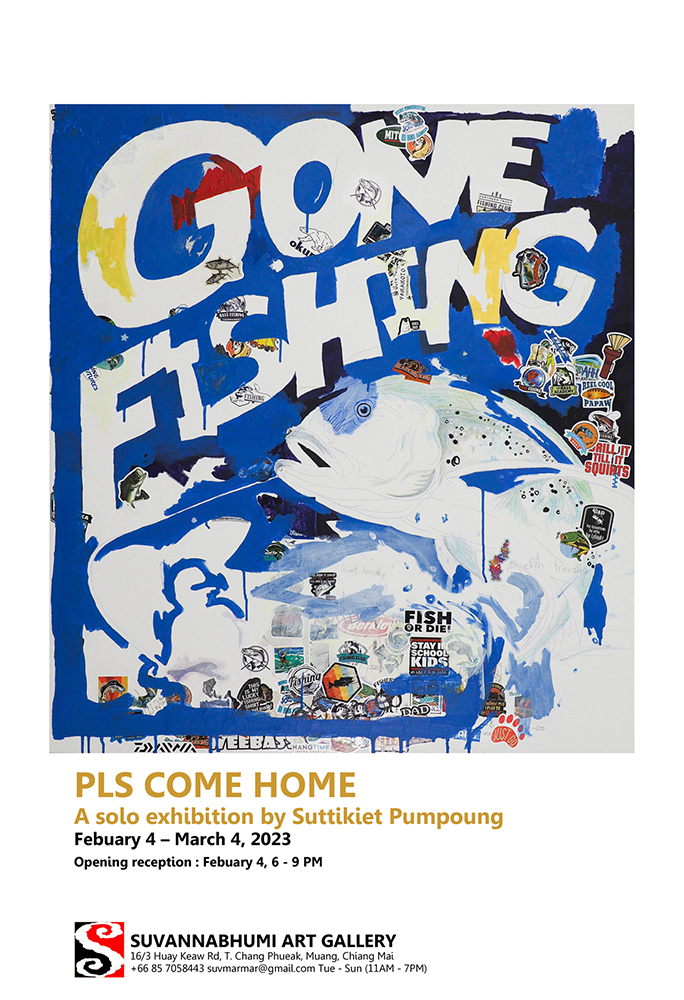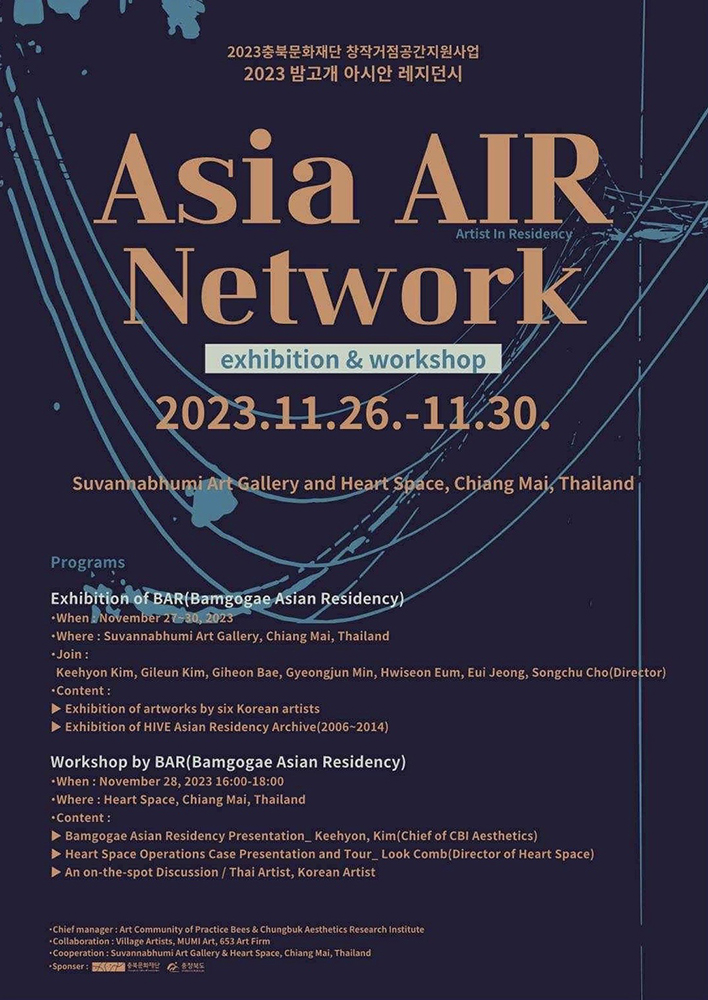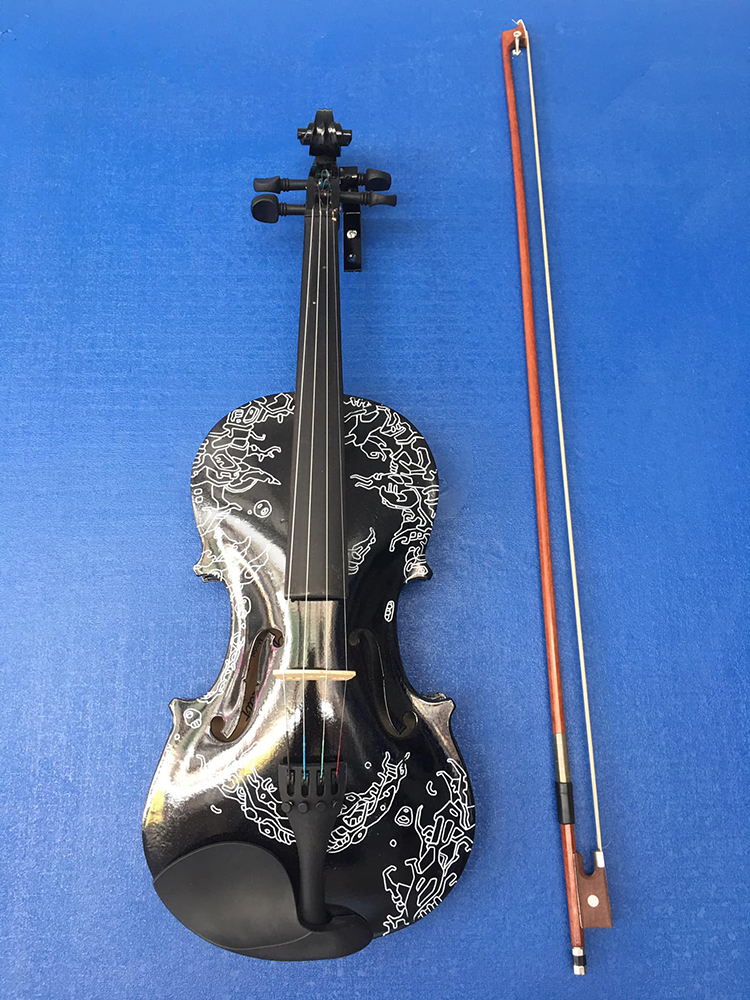1 May – 1 July 2022
- U Bat Sat [b. 1980, Thailand, lives and works in Chiang Mai, Thailand]
- 2021: Ph.D. Buddhist Studies, Mahachulalongkornrajavidyalaya University Chiang Mai Campus, Chiang Mai, Thailand.
- 2007: M.A. Philosophy and Religion Department, Faculty of Humanity, Chiang Mai University.
- 2003: B.A. Painting, Faculty of Fine Art, Chiang Mai University, Chiang Mai, Thailand.
- 2002: (out) Exchange Program, The College of Art, Hue University, HUE, Vietnam.
The Ballad of Myanmar Lu Myo
The chronicles of Myanmar and Theravada Buddhism began with the mentioning of two Mon traders who invited the hair of the Buddha to a small temple where it later became The Great Shwedagon Pagoda in modern days. During the 3rd Buddhist Century during the reign of Ashoka the Great, there had been dispatches of Buddhist missionaries to the land called “Suvarnabhumi” or Thaton, which is an important city in the lower regions of Myanmar.
The tales within the chronicles exhibit a reflection of trading routes in the Bay of Bengal for over 2,600 years. The routes are utilized for migrating people, especially the Mon and the Pyu who are among the first to settle in this area along Irrawaddy River. The rise of Bagan Kingdom in 13th Buddhist Century marked the beginning of nation state and unity, as well as the continuity of many different ethnic groups such as Pyu, Kachin, Tai Yai, Chin, Rakhine, Kayah, Kayin, Mon, and small tribes dispersed within the land for over long periods of time. Diversity brought conflict and fighting to the people of different races in Myanmar history. Mongol Empire invasions coupled with constant warring with neighboring states like China and Ayothaya shows as if the people in Myanmar were cursed to dwell in on-going war throughout a lifetime.
Then, the English colonialism arrived in 19th Buddhist Century. It brought forth major changes in the country including the collapse of monarchy system, changes in the form of governance, changes in political institutions and economy. In turn, this drove Myanmar to become modern under the name “British Burma” between 1824 – 1948, over 124 years of being colonized by England before gaining full independence on January 4th, 1948. Despite external threats cleared off, internal turmoil once again brewed up. The echo of gunfire heard on the parliament secretariat building and the death of General Aung San in the morning of July 19th, 1947, took the country to its darker depths. The rise of General Ne Win, who transformed the country into a Socialist Republic (military dictatorship) and halted the country like a hermit in asceticism, severely affected the people and its economy. Shortly after, Myanmar turned into one of the poorest countries in the world. Starvation and poverty forced the people to fight back. The major protest in 1988, the Saffron Revolution in 2007, and the latest anti-coup d’etat in 2020 up until today caused many deaths and imprisonment of its people like never seen before. No sign of it being over and no one could tell how the political conflict will come to resolution.
“Burmica” is the work of U Bat Sat, a contemporary artist who is in the habit of delving into the long history of Myanmar, especially the history of people and the many different ethnicities. He seeks to understand and learn about existence in diversity, particularly the history of neighboring countries that is often portrayed as the antagonist in the textbooks by the Ministry of Education in Thailand.
A painting of 2.4 x 8.40 m. which tells the tales and life stories of the little people of different origins, dispersed their habitats throughout the banks of Irrawaddy River. It is a rhythmic showcase of the history of people’s pain conflated with the history of political conflict in the country that is considered to have one of the longest historical roots in Southeast Asia.

